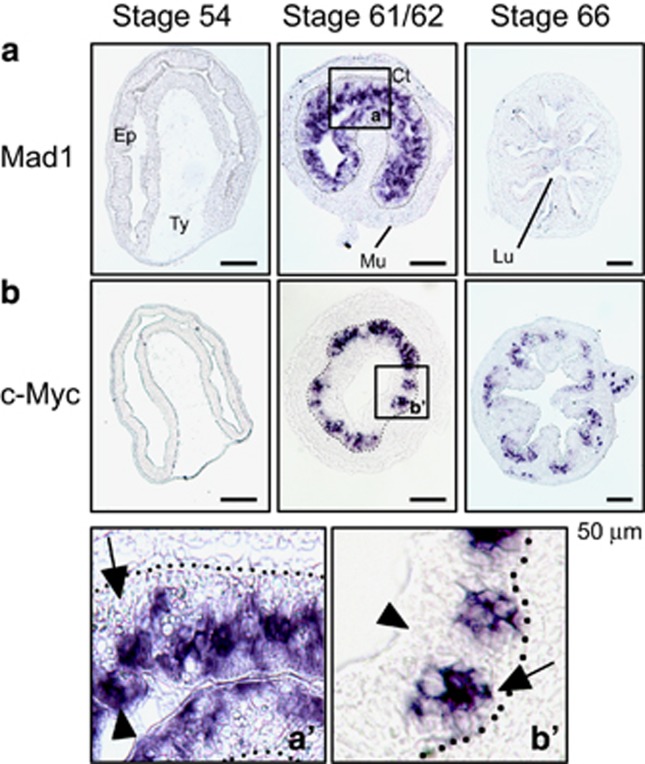Figure 4.
In situ hybridization analysis indicates that Mad1 is expressed in the epithelial cells at the climax of intestinal remodeling. Cross-sections of X. laevis intestine at premetamorphic stage 54, metamorphic climax stages 61/62 and the end of metamorphosis (stage 66) were hybridized with Mad1 (a) and c-Myc (b) antisense probe. The boxed region in a and b at stage 61/62 were enlarged and shown in (a′ and b′), respectively, at the bottom. Note that Mad1 expression was limited to dying larval epithelial cells facing the intestinal lumen in the epithelium at the climax of metamorphosis, consistent with the expression data in Figure 2. The expression of c-Myc was also high at the climax of metamorphosis but was in the epithelial layer close to the connective tissue. Arrows point to clusters of cells or islets in the epithelium close to the connective interface and expressing c-Myc, whereas arrowheads point to the epithelial cells facing the lumen, expressing Mad1. The approximate epithelium–mesenchyme boundary was drawn based on morphological differences between epithelial cells and mesenchyme cells in the photographs, under enhanced contrast and/or brightness by using Photoshop, if needed (dotted lines). Scale bar, 50 μm. CT, connective tissue; Ep, epithelium; Mu, muscle; Lu, lumen; Ty, typhlosole

